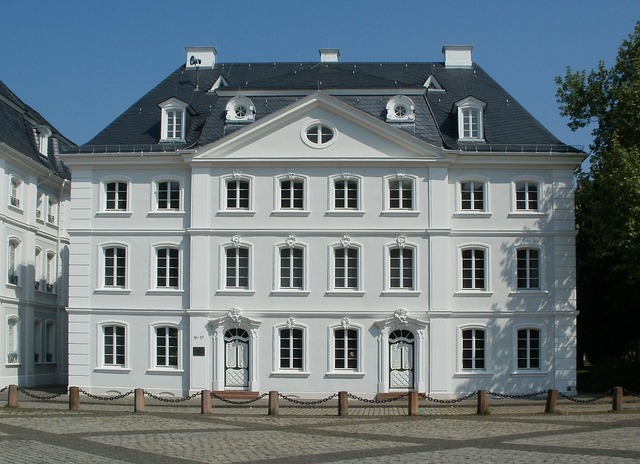When evaluating the pricing of an Executive Condominium (EC) in Singapore, it's crucial to consider a multitude of factors including location, development size, unit type, market demand, eligibility criteria such as income ceilings and occupancy conditions, and the unique hybrid nature of ECs as part-subsidized and part-market housing. Pricing varies across different towns or districts, with mature estates generally commanding higher prices due to their established amenities and transport links. The launch of new EC projects can influence both existing and upcoming launches, necessitating a dynamic market analysis. Prospective buyers must weigh the overall value proposition of an EC, which includes its balance between communal and private spaces, available facilities, and proximity to essential services. Additionally, historical pricing patterns of both new and resale ECs should be analyzed for informed purchase decisions, considering the potential for investment value and capital appreciation over time. The affordability of ECs is influenced by government policies like subsidies from the Housing & Development Board (HDB), ABSD rates, and LTV ratio ceilings. Market dynamics, including consumer behavior, economic indicators, and interest rate adjustments, also affect launch prices. Prospective buyers should engage in thorough research, understand their financial situation, explore various financing options, and stay informed on property market trends to make a prudent decision that aligns with their long-term financial goals. Keywords: Executive Condominium Ec, financial planning, affordability, property market trends, location, development size, unit type, eligibility criteria, government policies.
navigating the real estate landscape in Singapore, potential homeowners often find themselves intrigued by the appeal and affordability of Executive Condominiums (ECs). This article delves into the dynamics shaping EC launch prices, shedding light on the multifaceted influence of regional factors, historical trends, and government policies. From understanding the current market’s pricing to strategizing for budget-conscious buyers, each section unravels the intricacies of EC pricing, empowering readers with insights essential for informed decision-making in their property journey.
- Understanding Executive Condominium (EC) Launch Prices in Singapore
- Factors Influencing EC Launch Prises in Different Regions
- Historical Price Trends of New and Resale Executive Condos
- The Role of Government Policies on EC Pricing
- Analyzing the Impact of Market Demand on EC Launch Prices
- Strategies for Budgeting and Affordability When Considering an EC Purchase
Understanding Executive Condominium (EC) Launch Prices in Singapore

In Singapore’s dynamic property landscape, Executive Condominium (EC) launch prices are a subject of keen interest among prospective homeowners. These hybrid properties offer a unique blend of benefits, catering to both upgraders and first-time homebuyers with the option to upgrade to a private condominium after a certain period. The pricing of ECs is influenced by several factors, including location, development size, unit type, and the current demand in the resale market. Unlike public housing flats, ECs are part-subsidized and part-market, which can affect their pricing structure. Prospective buyers must consider the varying EC launch prices within different towns or districts, as they can vary significantly. For instance, an EC in a mature estate might command a higher price due to its proximity to amenities and transportation nodes. Additionally, the introduction of new EC projects can impact the pricing of both existing and upcoming launches, creating a dynamic market that requires careful analysis.
Understanding the nuances of EC launch prices involves more than just comparing per square foot (psf) rates; it also entails assessing the overall value proposition an EC offers. Factors such as the balance between public and private spaces, the range of facilities available, and the development’s proximity to schools and workplaces all contribute to the perceived value of an EC. Moreover, the eligibility criteria for purchasing an EC include income ceilings and occupancy conditions, which can influence the demand dynamics and, consequently, pricing. Buyers must weigh these factors against their long-term housing plans, as the ability to lease an EC initially before it becomes a fully private property after five years is a unique feature that affects both its immediate appeal and its potential for appreciation. This makes the decision of purchasing an EC a complex one, requiring a thorough understanding of the current market trends and personal financial planning.
Factors Influencing EC Launch Prises in Different Regions

The pricing of new Executive Condominium (EC) launches is a multifaceted issue influenced by several regional factors. Prospective buyers interested in ECs, which offer a hybrid of public and private housing benefits, should consider the location’s desirability, infrastructure developments, and the general real estate market trends when evaluating launch prices. Key influencers include the proximity to amenities such as shopping centers, transportation networks, and educational institutions, as well as the existing socio-economic landscape of the area. For instance, an EC situated near a mature estate with comprehensive facilities might command higher prices due to its desirability. Additionally, the supply and demand dynamics within the region play a crucial role; areas with limited new project launches may see prices rise, reflecting the scarcity of available units.
Market sentiment, economic conditions, and government policies also significantly impact EC launch prices. The overall economic climate can affect buyers’ purchasing power, while specific policies aimed at cooling or stimulating the property market can lead to price adjustments. For example, during periods of economic growth, when employment rates are high and wage increases are frequent, demand for housing typically rises, potentially leading to higher EC launch prices. Conversely, during economic downturns, prices may adjust downwards to meet reduced buyer demand. Therefore, understanding the interplay between these factors is essential for buyers looking to purchase an Executive Condominium, as it can influence the affordability and long-term investment potential of the property in different regions.
Historical Price Trends of New and Resale Executive Condos

Executive Condominiums (ECs) in Singapore have shown a dynamic pricing trend over the years, influenced by various factors including market demand, economic conditions, and government policies. Historically, new EC launches have often started at competitive prices relative to both private condominiums and resale HDB flats, making them an attractive option for upgraders. The pricing of new EC units typically reflects the balance between affordability and the amenities offered, which often include a mix of facilities similar to those found in private condos. Over time, there has been an upward trend in prices, reflecting the maturing property market and the increasing desirability of living in such developments.
Resale EC prices, on the other hand, are influenced by factors such as the age of the development, its location, the condition of the unit, and the broader resale market conditions. Historically, resale ECs have provided an alternative for buyers looking for a larger space or a specific location, often at a premium to new launch prices but at a discount compared to contemporary new EC units. The price gap between new and resale ECs can widen or narrow based on these factors and the overall market sentiment. Prospective buyers should consider the historical price trends of both new and resale Executive Condominiums when making their purchase decisions, as these trends can offer insights into potential investment value and long-term capital appreciation.
The Role of Government Policies on EC Pricing

The pricing of Executive Condos (ECs) in Singapore is significantly influenced by the strategic policies implemented by the government, which aim to balance the housing needs of upgraders and first-time homeowners. These policies dictate the eligibility criteria for EC applicants, such as income ceilings and the minimum occupation period before one can sell their unit. The Housing & Development Board (HDB) plays a pivotal role in the pricing mechanism by determining the subsidy levels that eligible applicants receive when purchasing an EC. This financial assistance directly impacts the affordability of these condominiums, thereby guiding the market prices.
Furthermore, the government’s intervention in the housing market, particularly through the Additional Buyer’s Stamp Duty (ABSD) and Loan-to-Value (LTV) limits, affects EC pricing. These measures are designed to curb speculative buying and ensure that EC prices remain within reach for the intended group of buyers. The adjustments in ABSD rates and LTV limits can lead to a softening or uptick in EC prices, as developers reassess the demand and supply dynamics in response to these policies. As such, the government’s role in shaping the EC market is multifaceted, with its policies acting as a key determinant in the pricing of these condominiums.
Analyzing the Impact of Market Demand on EC Launch Prices

The pricing of new Executive Condominium (EC) launches is a dynamic process influenced significantly by prevailing market demand. Developers, in their efforts to align with the Executive Condo Ec market’s pulse, closely monitor trends and consumer preferences. Factors such as population growth, demographic shifts, and economic conditions play pivotal roles in shaping demand. For instance, an influx of young couples or multi-generational families seeking spacious and affordably priced homes can drive up demand, prompting developers to adjust their pricing strategies to meet this need. Conversely, a saturated market with high inventory levels may necessitate more competitive pricing to stimulate sales. Market sentiment, influenced by economic outlooks and interest rate changes, also affects the buying power of potential homeowners, thereby influencing launch prices. Developers must navigate these variables with precision, balancing profitability with accessibility to attract buyers in a competitive landscape within the Executive Condo Ec segment.
Strategies for Budgeting and Affordability When Considering an EC Purchase

When venturing into the purchase of an Executive Condominium (EC), a balance between aspiration and financial prudence is key. Prospective buyers must assess their long-term financial goals alongside the current economic landscape to determine what they can realistically afford. One effective strategy for budgeting involves detailed planning, where potential EC owners map out their income, expenses, and savings with precision. This foresight extends to considering future changes in personal circumstances or market conditions that could affect mortgage repayment capabilities. To enhance affordability, it’s advisable to explore various financing options available for EC purchases. This may include understanding the differences between bank loans, HDB loans, and the various grant schemes that might be applicable to first-time homeowners. Additionally, considering an EC’s location, size, and development track record can also influence its price point, which in turn affects affordability. By conducting thorough research on these factors and staying informed about the property market trends, buyers can make a well-informed decision that aligns with their financial situation, ensuring a sustainable investment in an Executive Condominium EC.
In conclusion, navigating the landscape of Executive Condominium (EC) launch prices in Singapore is a complex task influenced by a multitude of factors, including regional demand, government policies, and historical price trends. Prospective buyers must consider these dynamics to make informed decisions when purchasing an EC. Historical data indicates that while prices can fluctuate, understanding the long-term trajectory provides valuable context for budgeting and affordability assessments. As new developments come to market, the EC segment continues to offer a unique housing option for both upgraders and first-time homeowners. By staying abreast of market conditions and policy updates, potential buyers can capitalize on opportunities to secure an EC that suits their lifestyle and financial planning.



